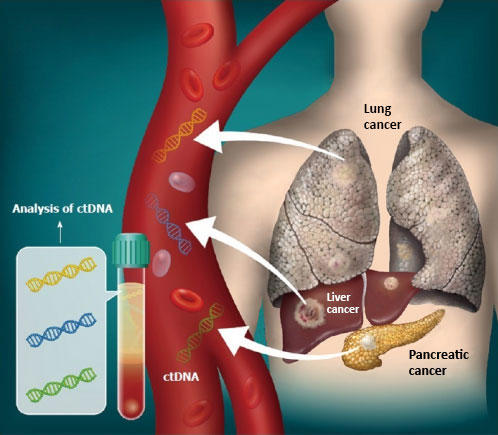ITHACA, N.Y. - Decades of efforts to eradicate invasive smallmouth bass from a midsized Adirondack lake have led to a surprising result: The bass rapidly evolved to grow faster and invest more in early reproduction, leading to an even larger population of smaller fish.
A study published in the journal Proceedings of the National Academy of Sciences revealed that, in response to pressures from annual removal of a quarter of the smallmouth bass population, the numbers of small bass – 5 inches and under – have increased even as larger fish (greater than 12 inches) were mostly eliminated.
Though smallmouth bass are native to North America, they were introduced widely across the Adirondacks in the 1900s, where they took over many lakes. Their arrival led to declines of native fish species and stunting of growth rates in prized brook and lake trout, which compete with bass for the same prey.
The findings have important implications from a management standpoint, both in terms of highlighting the importance of preventing non-native species invasions before they happen and in understanding that efforts to suppress a species may in fact backfire, leading to the opposite effect.
While plant and insect populations have long been recognized to evolve in response to herbicide or pesticide applications, manual removals of plants and animals were not thought to induce such adaptations. However, the bass population shifted towards a fast-living and early-maturing life history strategy as a result of drastically heightened mortality rates. One solution may be to conduct removals less often or take only a subset of fish, which could reduce the evolutionary pressure for bass to adapt, but the authors said that more study is needed. The broad takeaway for other invasive species removal efforts is that, even in the absence of a clear evolutionary pathway, eradication efforts should be seen as an evolutionary arms race.
"Twenty-five years ago, Cornell's Adirondack Fishery Research Program set out to test whether we could functionally eradicate smallmouth bass from a lake," said Peter McIntyre , professor in the departments of Natural Resources and Ecology and Evolutionary Biology, and among the senior authors of the study. "It took us 25 years to prove why the answer is no: the fish evolved to outmaneuver us."
"What we've documented is that life history traits like growth rate and age at maturity are things that can evolve to reduce the susceptibility to our removal efforts," said first author Liam Zarri, who led the study and is now a postdoctoral fellow at Smithsonian's National Zoo in Washington, D.C.
Natural resources professor and study co-author Cliff Kraft began efforts in 2000 to suppress bass in Little Moose Lake in the Adirondacks with boat electrofishing, which uses a generator to electrify water and temporarily stun fish. Scientists then scooped them up, released the native species back into the lake, and removed all captured bass.
"The expectation was that if you removed thousands of bass from the lake every year, it would cause a rapid population crash leading to eradication" Zarri said. "For the first year or two, that seemed to be the case."
At the same time, he said, population sizes of native fishes started recovering. Also, lake trout growth rates began to increase.
But after a few years, the researchers noticed their catch rates were increasing, rather than decreasing, driven by an expanding population of young bass.
Zarri's genetic analysis, made possible by smallmouth bass tissue samples that Kraft collected starting in 1995, revealed that selection pressures from removing fish resulted in dramatic genetic changes between 2000 and 2019 in genes across three chromosomes. These genomic regions were associated with increased growth and early maturation rates.
Two companion papers, led by Tommy Detmer, a former aquatic ecologist at Cornell who is now an assistant professor at Iowa State University, examined the effects of smallmouth bass removal efforts on native fishes and on smallmouth bass behavior.
In one paper , co-led by Montana Airey, a doctoral candidate in McIntyre's lab, the team found that nearly all native freshwater fish populations initially rebounded. But ongoing monitoring revealed that after 10 years, some fish populations continued to respond positively while others reverted back to the same low abundance as when smallmouth bass dominated the lake. The results highlight the importance of continual monitoring to understand the full ecosystem dynamics over time, Zarri said.
The findings have important implications for brook and lake trout in the Adirondacks. Not only are they threatened by warming surface waters and depleted oxygen levels in cooler deeper water where the fish retreat to over summers, they now also face the added burden of competing with bass for prey, McIntyre said.
Detmer's other paper found that smallmouth bass, but not other native fish, in Little Moose Lake became more skittish in the years after removal efforts began. One possible explanation is that growing up in a lake where bass are removed four times per year has made the survivors cautious.
"We are also interested in testing whether there is a genetic underpinning for behavior," whereby fish that are more skittish by nature (rather than by nurture) have avoided being caught, resulting in the skittish genotype sweeping through the population, Zarri said.
"Long-term studies of management efforts are critical, not only for deepening our understanding of natural ecosystems, but also for evaluating the effectiveness of specific management tools," Detmer said.
Zarri, McIntyre and Kraft are co-authors on the companion studies.
Project funding was in part provided by the Adirondack League Club, the Northeast Climate Adaptation Science Center, the National Science Foundation Extreme Science and Engineering Discovery Environment, the Cornell University Elizabeth Miller Francis '47 Summer Research Grant, and the Cornell University Kieckhefer Adirondack Fellowship.






